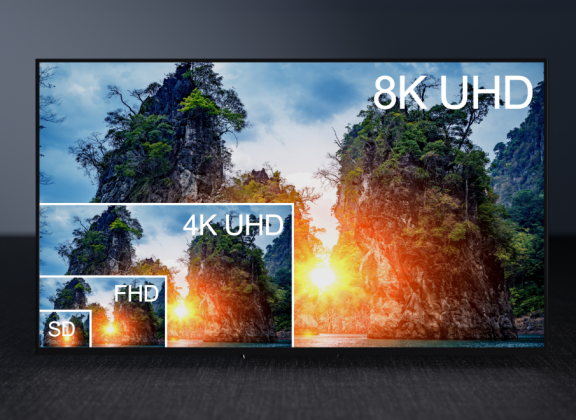Delivering stunning, ultra-high-definition visuals is increasingly important for viewers who crave a theater-like atmosphere at home. As 4K and 8K media libraries expand, adjusting your IPTV set-top box to handle the higher resolutions can feel complicated. Recognizing the demands of modern codecs, the importance of strong network performance, and the right system settings is pivotal for uninterrupted playback. Below, you will find the essential elements to prepare your IPTV set-top box for streaming 4K and 8K content, so you can enjoy the sharpness and depth that these formats promise.
Understanding 4K and 8K Requirements
Shifting from standard HD to 4K represents a significant increase in pixel density, and moving up to 8K compounds that jump further. Ultra HD visuals offer heightened detail and color vibrancy, but they also need more powerful decoding hardware. Devices must be compatible with codecs like HEVC, AV1, or VP9. Equally important is internet bandwidth, as 4K content typically demands around 25 Mbps, while 8K may require 50 Mbps or more. A wired Ethernet connection often delivers the most reliable data flow, minimizing disruptions that can occur in wireless environments.
Checking Hardware Capabilities
The heart of 4K and 8K performance lies in the set-top box’s system-on-a-chip (SoC). Look for devices that incorporate hardware-based decoding instead of relying solely on software methods. Confirm that the HDMI port meets current standards: HDMI 2.0 usually covers 4K needs, whereas 8K playback may call for HDMI 2.1. Sufficient RAM—commonly at least 2 GB—is crucial for seamless operation, especially if you plan to multitask or run resource-intensive apps. Having enough internal storage or external storage options can also improve caching, updates, and any local recording you perform.
Refining Video Output and Display Settings
Once you verify hardware compatibility, turn your attention to video output configurations. Many set-top boxes allow you to manually select resolution and refresh rate; matching your display’s native resolution helps avoid unnecessary upscaling or downscaling. On 4K TVs, aim for 60 Hz or 120 Hz if supported, while an 8K-capable TV should be matched with a corresponding output from your box. Color depth can be critical for picture fidelity; when HDR formats such as HDR10 or Dolby Vision are available, make sure they are enabled. Pass-through modes can help your television or projector manage color space directly for optimal results.
Ensuring Stable Connectivity and Bandwidth
Smooth high-resolution streaming hinges on a robust internet connection. For 4K, a steady 25 Mbps is often cited, and 8K streaming can push beyond 50 Mbps. While modern Wi-Fi routers—especially those supporting Wi-Fi 6 or Wi-Fi 6E—provide impressive performance under the right conditions, wired Ethernet is still the gold standard for stability. If your ISP imposes data caps, monitor your consumption; extended ultra-HD viewing can quickly accumulate large amounts of data.
Staying Updated with Firmware and Software
Firmware updates routinely address performance gaps, add support for new codecs, and fix bugs that might hinder playback. Checking your box for available firmware releases should be a regular habit. Likewise, streaming apps often roll out updates that can improve compatibility or refine how content is displayed. Some boxes offer specialized IPTV or media apps that handle unique broadcast formats or advanced codec requirements. If you experiment with multiple apps, pick the one that aligns best with your device’s hardware and your preferred services.
Optimizing Audio and Surround Sound
Immersive visuals pair best with an equally compelling audio environment. Confirm that your set-top box supports pass-through for high-end formats like Dolby Atmos or DTS:X, especially if your home theater system or soundbar can decode them. Some platforms default to basic stereo unless you switch to the proper audio track, so double-check app settings. Appropriate synchronization between audio and on-screen action ensures that voices and sound effects align with what you see, preserving the sense of realism.
Managing Temperature and Maintaining Performance
4K and 8K streams place increased demand on processing hardware, generating more heat. Overheating can lead to throttling or unexpected performance drops. Provide proper ventilation around your device and keep vents clear of dust. If your box includes an internal fan, confirm that its firmware is also up to date for optimal cooling behavior. Keeping temperatures in check guards against potential slowdowns, stutters, or abrupt crashes.
Fine-tuning an IPTV set-top box for 4K and 8K content requires attention to both hardware and software details. By confirming codec support, ensuring ample bandwidth, applying the right display settings, and staying current with firmware updates, you create a reliable platform for ultra-high-definition streaming. The result is a next-level viewing experience: brilliant visuals, immersive sound, and the satisfaction of seeing every subtle detail that 4K and 8K content can deliver.
